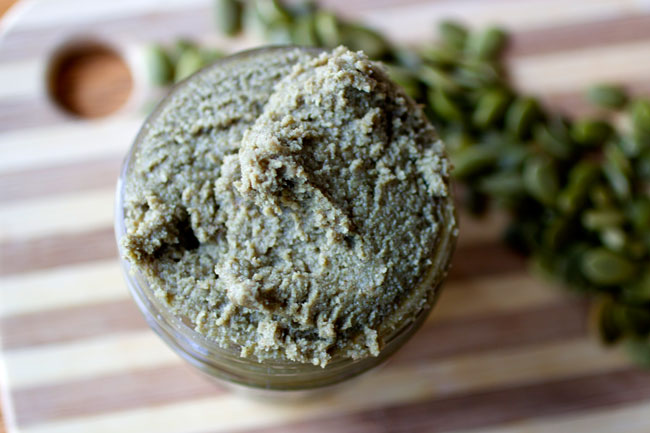I love making nut butters of all kinds. From almond butter, the trusty classic, to versions using more unique ingredients like cashews and raw honey, I find each variation satisfying. Lately I've been experimenting with seed butters too. And let me tell you, they are equally as delightful. Pumpkin seed butter is one of my absolute favorites and, If you can get over the fact that it is green, I'm sure you will fall in love with it too. This recipe uses soaked pumpkin seeds and a warming blend of spices to make a unique and versatile butter that pairs well with sweet and salty foods alike.
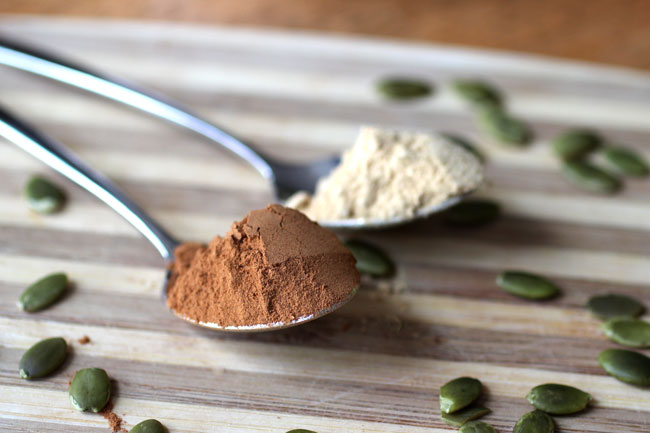
For some reason, when I find seed butters at the store, they are always marked with a crazy-big price tag. I understand that it takes a very large pile of seeds to grind out just a tiny bit of butter, but the expensiveness factor just doesn't seem fair! This is one of the major reasons behind my pure excitement when it comes to blending them up at home. Once I've finished it is like having my own little gourmet seed butter display, right on the kitchen counter!
Pumpkin seed butter is one of the most nutrient-dense of the bunch. Here is just a small sampling of the many nutrients packed into pumpkin seeds:
- Magnesium- 1/4 cup of the seeds contains half of your daily value!
- Zinc- almost 2 mg in a 1/4 cup serving
- Iron- one handful of seeds contains 15% of your daily requirement
- Omega-3s- one of the top plant sources of alpha-linolenic acid or ALA
- Amino acids- loaded with calming tryptophan and others
- Antioxidants- active phytonutrients protect against oxidative stress
Tips for Making Seed Butters
If you are new to making nut and seed butters, there are a few tips that I always like to share:
1. Try soaking the seeds first! The process of soaking seeds in salt water and then drying them at low temps in the oven neutralizes the anti-nutrients that can be troublesome to the digestive tract. You can learn more about this process in our article That's Nuts! The Complete Guide to Soaking Nuts and Seeds.
2. It always takes longer than you think. Once the seeds have been ground up in the food processor, it can take awhile for them to transition into a creamy paste. First they take on a mealy-like texture, then get clumpy and will sometimes stick together forming a giant ball. My advice is to keep going through it all! Eventually the blending will do its work and you will get the smooth seed butter you've been dreaming of. If it doesn't seem to be happening after 15 minutes or so, add some more oil and see if that helps.
3. Blend until you get the texture you want. Some people like grainy seed butters and others prefer them more velvety and spreadable. The longer you blend for, the more creamy and liquid-like the butter will become.
4. Change up the oil. Tired of adding coconut oil to everything? Feel free to experiment with other types of oils too. A high quality sunflower oil makes a lovely companion to seed butters, as will argan oil and unrefined olive oil in some cases. Think about the overall flavor you are going for, and choose an oil accordingly.
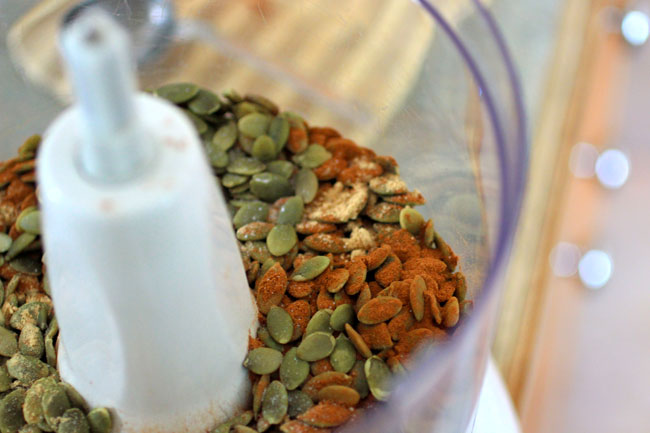
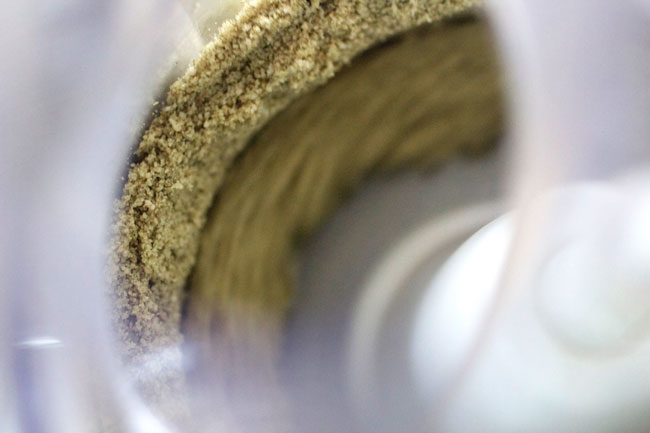
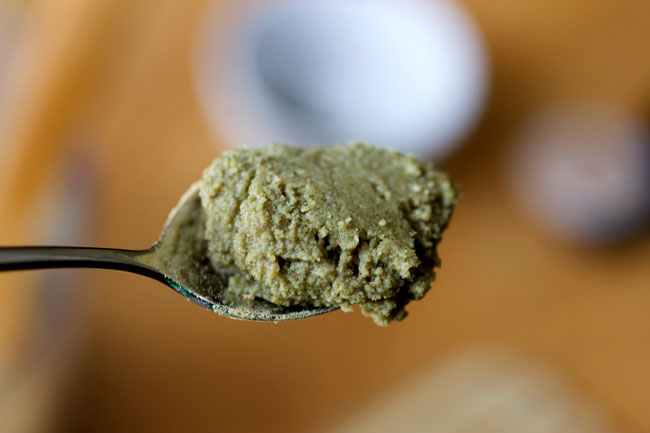
Cinnamon-Ginger Pumpkin Seed Butter
By Kayla- Radiant Life
2 1/2 cup soaked pumpkin seeds (learn how to make your own here or buy here)
2 teaspoons cinnamon
1/2 teaspoon ginger
1 tablespoon raw honey, optional
1/4 cup coconut oil
Add pumpkin seeds, spices and raw honey to a food processor or high power blender. Process on high for about 2 minutes or until the seeds are coarsely ground. Add half of the coconut oil and blend for another 2-4 minutes. Spoon in the remaining coconut oil. Continue to process until the seeds are ground into a paste, stopping periodically to scrape down the sides as the mixture builds up. The seed mix will become clumpy and sticky before it becomes smooth. The longer you blend the creamier the nut butter will become, so adjust the time based on your texture preferences. Store in a sealed container in refrigerator, serve at room temperature.. Enjoy!
